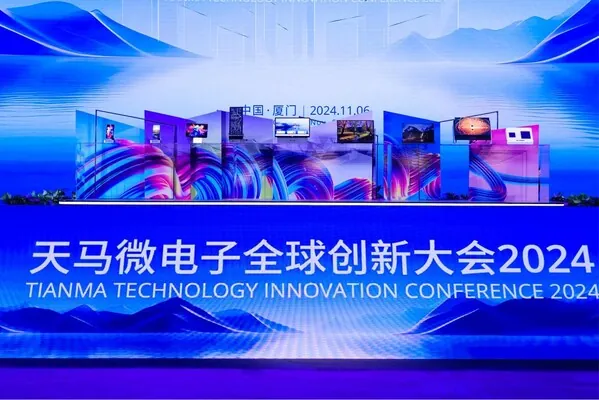
How Multimode Propulsion is Set to Transform Space Exploration!
2024-11-02
Author: Daniel
How Multimode Propulsion is Set to Transform Space Exploration!
In an exciting leap forward for space exploration, NASA is gearing up to send the “first woman and first person of color” to the lunar surface as part of its Artemis Program. This historic mission will mark the first time astronauts have set foot on the Moon since the Apollo 17 mission in 1972, ushering in a new era of lunar exploration. With plans for permanent infrastructure on the Moon, NASA aims to conduct regular missions, expanding our understanding of our celestial neighbor and paving the way for future ventures beyond Earth.
Crucial to these ambitious lunar missions will be efficient and reliable spacecraft capable of making frequent trips between Earth and the Moon to transport crews, equipment, and payloads. A groundbreaking study from researchers at the University of Illinois Urbana-Champaign, supported by NASA, introduces an innovative propulsion method called multimode propulsion. This technique cleverly integrates high-thrust chemical propulsion with low-thrust electric propulsion using the same propellant, making it a game-changer in the field.
The research team, led by doctoral student Bryan C. Cline alongside Alex Pascarella, Robyn M. Woollands, and Joshua L. Rovey from the Grainger College of Engineering, has highlighted several benefits of multimode propulsion, such as reduced weight and cost-effectiveness. The potential applications of this technology could significantly help NASA achieve its Artemis objectives.
Their findings, detailed in the paper, “Indirect optimal control techniques for multimode propulsion mission design,” reveal a system where a single chemical monopropellant, like hydrazine or the Advanced Spacecraft Energetic Non-Toxic (ASCENT) propellant, powers both chemical thrusters and electrospray thrusters. The electrospray component, which utilizes a process called electrospray ionization (ESI) to produce and accelerate charged liquid droplets, has its roots in successful missions like the European Space Agency’s LISA Pathfinder.
By harnessing both propulsion modes, spacecraft could perform maneuvers with less propellant, a concept referred to as minimum-fuel transfers. Cline stated, “Multimode propulsion systems also expand the performance envelope ... I can choose a high-thrust chemical mode to get someplace fast and a low-thrust electrospray to make smaller maneuvers.”
This investigation builds upon earlier work conducted by Cline and a team at NASA's Goddard Spaceflight Center. In a previous paper, they explored how multimode propulsion compares to traditional all-chemical and all-electric propulsion systems for particular lunar missions, showing the feasibility of this technology for NASA's CubeSat missions.
Notably, multimode propulsion differs from hybrid propulsion systems, which use two separate propellants requiring additional infrastructure and mass. By utilizing just one propellant, multimode propulsion dramatically reduces a spacecraft's dry mass, leading to potentially cheaper launches and increased payload capacity.
This research does not stop at analysis; it extends into the development of an algorithm capable of optimizing mission trajectories. Cline's team has already applied this innovative technique to transfer scenarios between Earth and Mars, as well as to low Earth orbit, significantly minimizing fuel usage.
With the backing of the Joint Advanced Propulsion Institute (JANUS) and federal funding from NASA, Cline and his colleagues envision a future where multimode propulsion transforms how small spacecraft navigate our solar system. “It’s an emerging technology," Cline explained, "and it’s enhancing because if you’ve got a given mission concept, you can do more with multimode propulsion. You’ve got more flexibility.”
As NASA strives to increase its presence on the Moon and beyond, multimode propulsion may be the key that unlocks the door to a new era of exploration and discovery. The potential for more agile and economical space missions has never looked brighter—and now, with technologies like multimode propulsion at the forefront, the cosmos could soon be within reach like never before!





 Brasil (PT)
Brasil (PT)
 Canada (EN)
Canada (EN)
 Chile (ES)
Chile (ES)
 España (ES)
España (ES)
 France (FR)
France (FR)
 Hong Kong (EN)
Hong Kong (EN)
 Italia (IT)
Italia (IT)
 日本 (JA)
日本 (JA)
 Magyarország (HU)
Magyarország (HU)
 Norge (NO)
Norge (NO)
 Polska (PL)
Polska (PL)
 Schweiz (DE)
Schweiz (DE)
 Singapore (EN)
Singapore (EN)
 Sverige (SV)
Sverige (SV)
 Suomi (FI)
Suomi (FI)
 Türkiye (TR)
Türkiye (TR)